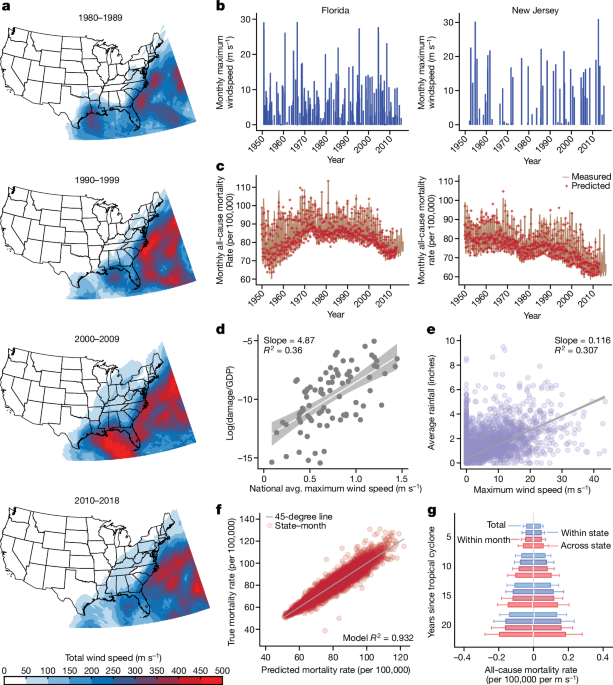The article discusses the use of the LICRICE model to analyze wind speed data for tropical cyclones (TCs) and their impacts on mortality rates in the contiguous United States (CONUS) from 1930 to 2015. LICRICE estimates maximum sustained winds during TCs, integrating various storm metrics while acknowledging that other factors, like storm surge and rainfall, correlate indirectly with wind speed.
The approach involves reconstructing TC incidence at a high spatial resolution, allowing for detailed state-by-state analysis. A key finding is that maximum wind speed is a strong predictor of social and economic outcomes, with substantial emphasis placed on the indirect mortality effects of TCs over time.
The study employs robust statistical methods to explore mortality data, factoring in population demographics and historical trends in mortality rates, with specific consideration for age and racial disparities. Econometric techniques help estimate both direct and indirect deaths attributable to TCs, accounting for delayed impacts on health outcomes.
Furthermore, the analysis reveals that the mortality burden associated with TCs has increased significantly post-2001, possibly due to changing environmental conditions. The findings aim to clarify the long-term mortality impacts of TCs, providing insights critical for policy and disaster preparedness.
Overall, the research highlights the need to explore the complex interactions between climate phenomena and public health outcomes, offering valuable data for future studies on mortality linked to TCs.
Source link


